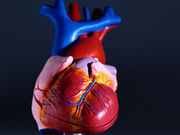Significant subset of athletes exceed diagnostic criteria for arrhythmogenic RV cardiomyopathy
FRIDAY, Aug. 19, 2016 (HealthDay News) — Right ventricular (RV) remodeling occurs in Olympic athletes, according to a study published online Aug. 17 in JACC: Cardiovascular Imaging.
Flavio D’Ascenzi, M.D., from the University of Siena in Italy, and colleagues examined the impact of gender and different sports on RV remodeling in highly-trained athletes. A total of 1,009 Olympic athletes were assessed by two-dimensional echocardiography and Doppler/tissue Doppler imaging.
The researchers found that indexed RV outflow tract (RVOT) in parasternal long-axis (PLAX) views was greater in female than male athletes (P < 0.001). Among skill, power, mixed, and endurance sports, both RVOT PLAX and parasternal short-axis (PSAX) views differed significantly (both P < 0.001). For indexed RVOT PLAX and PSAX, the 95th percentiles were 18 and 20 mm/m², respectively. Among the groups there was no difference in fractional area change and s’ velocity (P = 0.34 for both). In 4 and 32 percent of athletes, respectively, RV enlargement compatible with major and minor Task Force diagnostic criteria for arrhythmogenic RV cardiomyopathy (ARVC) was observed. A rounded apex, prominent trabeculations, and a prominent/hyper-reflective moderator band were seen in 81, 37, and 0.5 percent of athletes, respectively.
“A significant subset (up to 32 percent) of athletes exceeds the normal Task Force limits; therefore we recommend referring to the 95th percentiles here reported as referral values; alternatively, only major diagnostic Task Force criteria for ARVC may be appropriate,” the authors write.
Full Text (subscription or payment may be required)
Editorial (subscription or payment may be required)
Copyright © 2016 HealthDay. All rights reserved.








